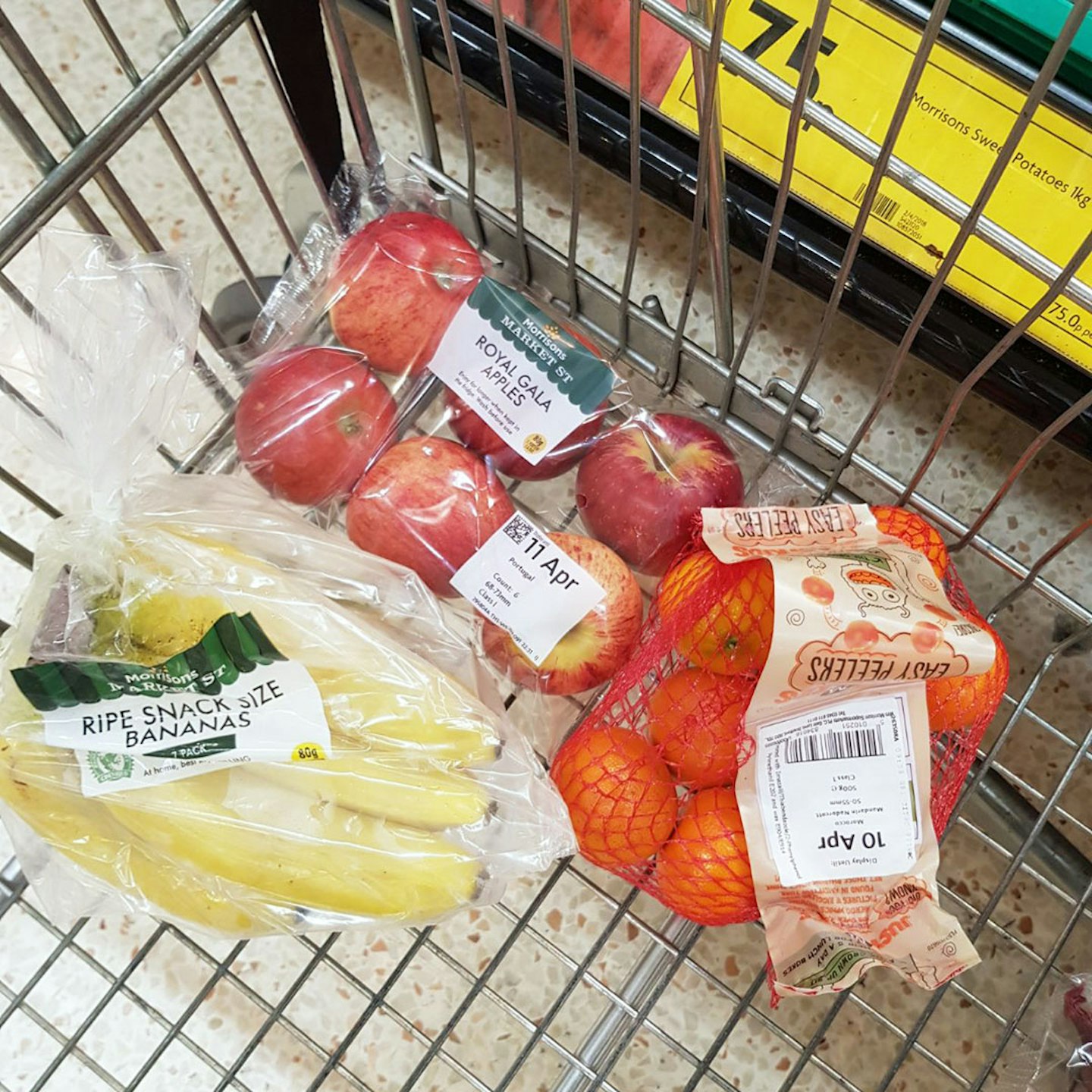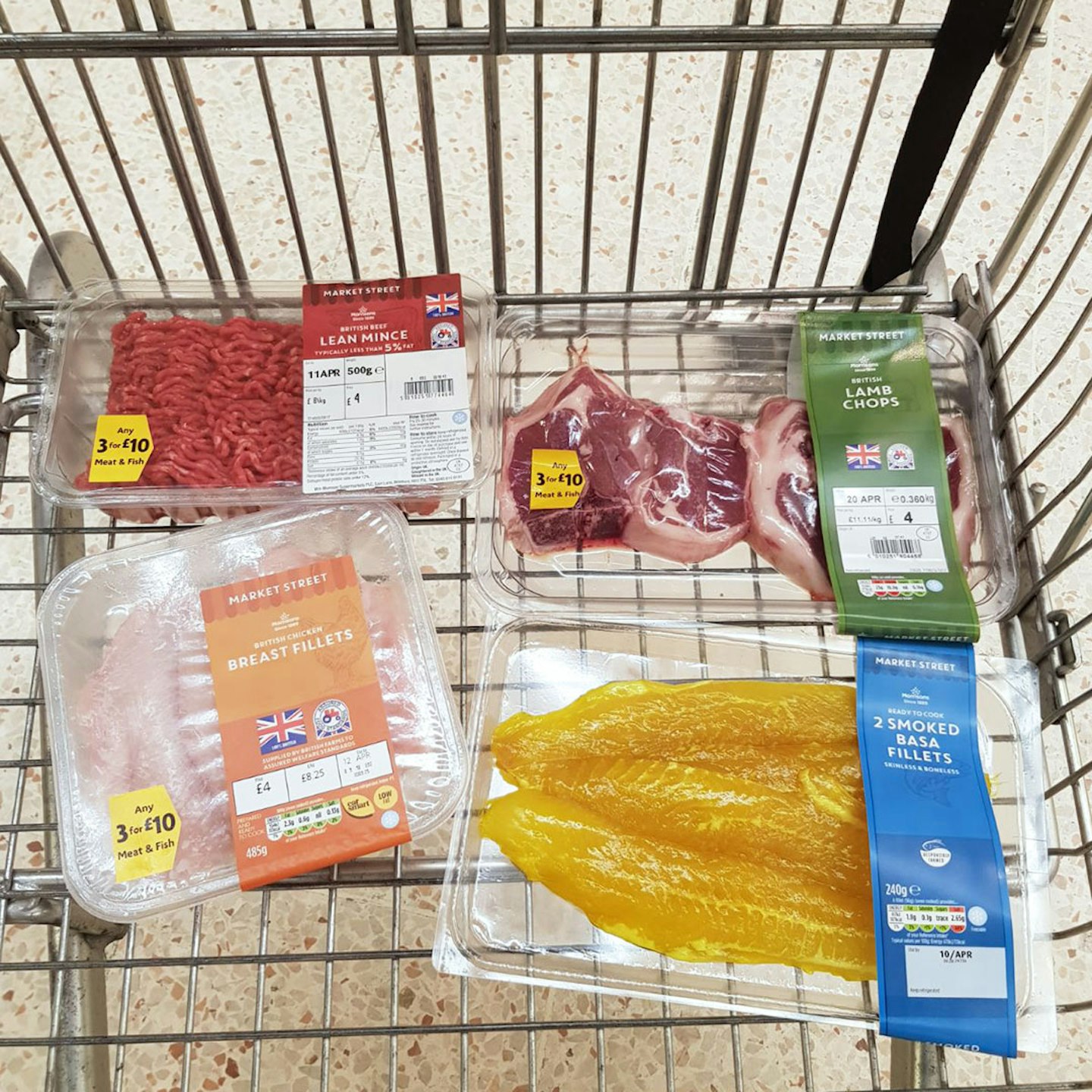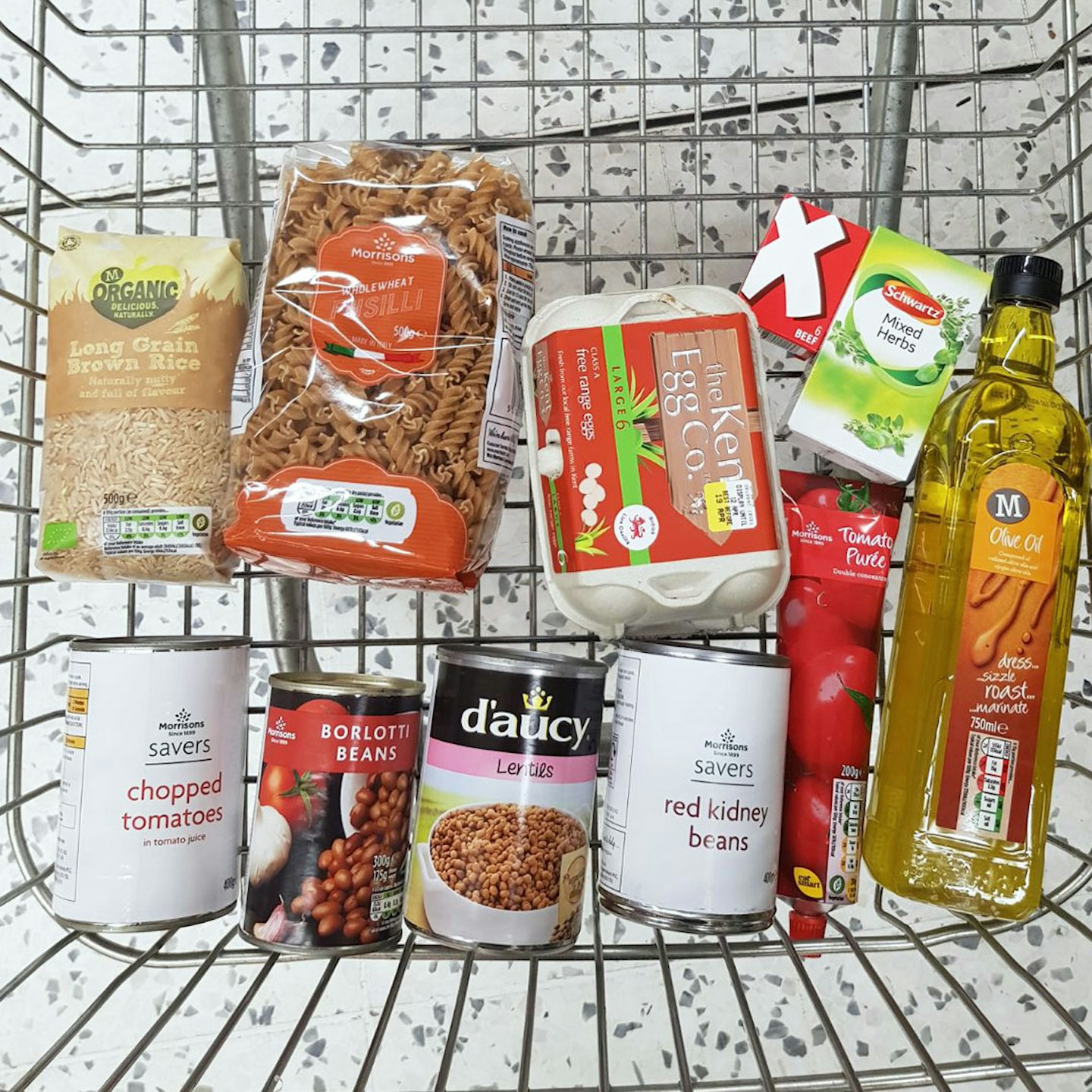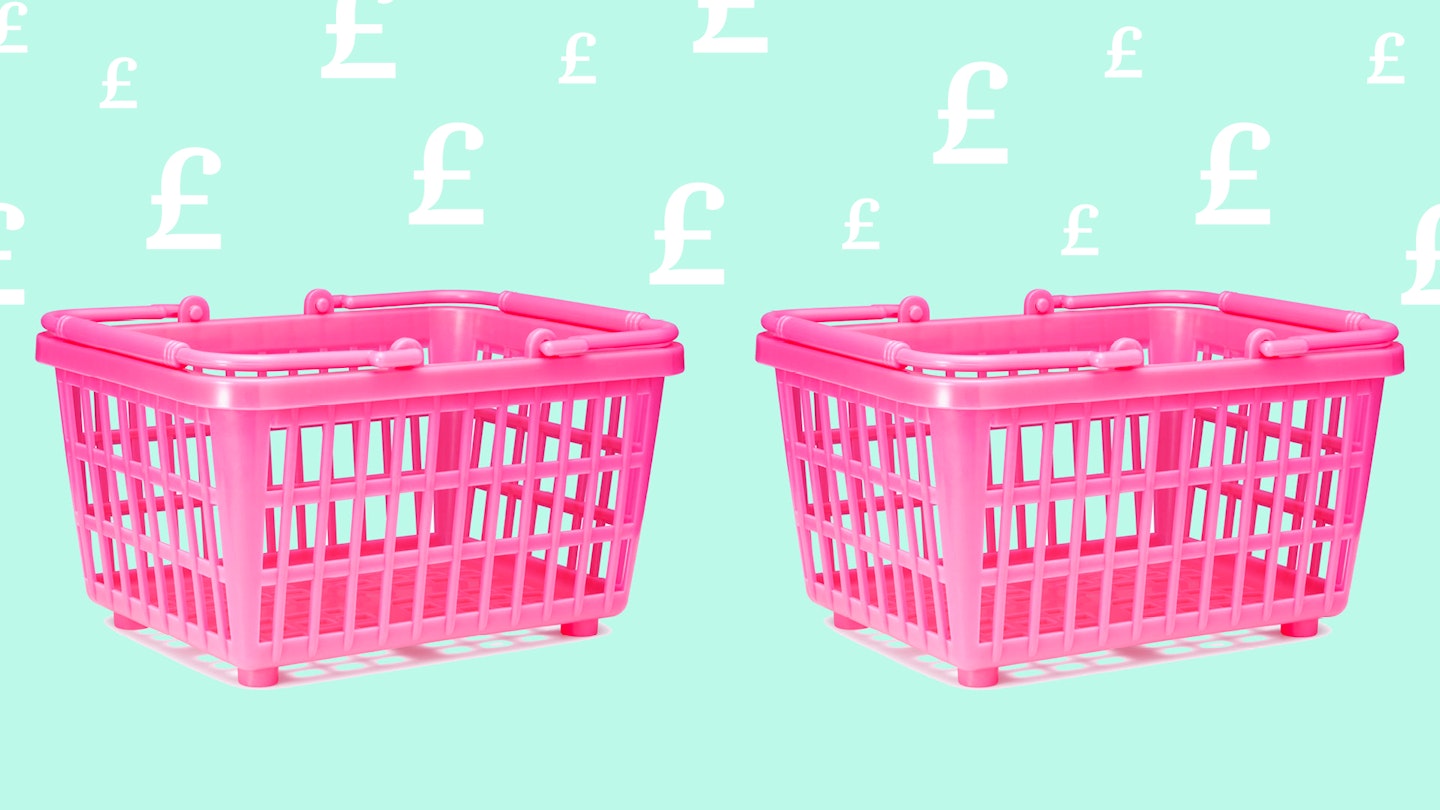I don’t think my mum has ever looked at me with so much pity as when I told her I don’t buy chocolate because I can’t afford it. To be perfectly honest, I was exaggerating (I wanted a better Easter egg), but it’s true that I often choose to skip chocolate and save myself money on something that has zero nutritional value anyway. However, it’s normally the other way around.
‘It’s too expensive to eat healthily’ is thrown around a lot when someone is attempting to justify a nutritionally void diet. Well, as a single person who would rather live in central London than have a normal amount of disposable income, I’m here to tell you that you CAN compile a healthy shopping list with little to no money.
There's a lot of conflicting evidence about diets. Whether your gluten-free, vegan, trying to lose or gain weight, there’s 100 opinions out there about what you should be eating. Since there are so many different dietary requirements to account for, and the issue of how accessible certain food is for different people, we’ve spoken to a nutritionist to compile the ultimate healthy shopping list that takes it back to basics.
Helen Adams, our expert nutritionist, states that the healthiest thing to do is make sure you plan each of your meals to include half non-starchy vegetables, one quarter protein and one quarter carbohydrates. That means that YES, you can eat pasta! It was ALL a lie!
In fact, researchers from St. Michaels Hospital in Toronto recently found that ‘pasta didn’t contribute to weight gain or increase body fat’, in a study around obesitypublished in the BMJ Open.Even better, ‘analysis actually showed a small weight loss.’ For the study, it confirmed that pasta can be part of a healthy diet, to which the world applauded after years of pasta-guilt.
So, what else are we fed to believe that’s a blatant lie? Well, if Helen’s plate advice is anything to go by, pretty much every diet ever is far too unsustainable to be considered healthy.
Ketogenic Diet? Atkins? Paleo? What diet should I follow?
According to Helen, all we need to do is make sure our plate is in the correct proportions she advises and we’ll be healthy. No need to starve yourself of carbs or fats, in fact, ‘good fats keep your brain active and keep you feeling full, and carbohydrates provide your energy’.
Good fats are usually monounsaturated and polyunsaturated fats, whereas bad fats are the likes of trans fats, nutritionally labelled as ‘partially hydrogenated oils. While saturated fats have had a bad reputation for years, recent evidence suggests they’re more neutral than previously thoughts. Some great examples of healthy fats include avocados, certain nuts (walnuts, almonds, pistachios), which includes nut and seed butters, olives and certain fish like tuna and salmon.
Healthy meal plan: What should your healthy shopping list include?
Helen says we need to cover the three main food groups, that’s protein, good fats and carbohydrates. For vegetables, she recommends one of each colour of the rainbow as each colour has a ‘different health-giving property’. Vegetables ‘do everything from supporting your immune system and feeding your “good bacteria”, to making your digestive system work properly, and improving your skin and mood’ she says. While fruit is also a great healthy food option, she does advise clients to consume it in moderation.
For protein, any meat, fish or eggs are a great source. Vegetarian options range from tofu and beans to cheese. However, one thing Helen is adamant about is staying away from processed foods. ‘They’re expensive, high in salt and sugar, and never fill me up ‘, she says, ‘although people buy them for convenience, I can whip up a tasty meal from scratch in about 15-20 minutes and I think my body deserves that investment every day.’
Helen’s favourite fats include olive oil, coconut oil and butter’. The only liquid oil she uses is olive oil as heat changes the chemical structure and they become trans fats. She also advises that low-fat foods usually ‘tend to put on more weight as they are higher in carbohydrates.’
Healthy eating store-cupboard essentials?
These are the things you can stock up on and not have to re-purchase every month, saving you money and ensuring you always have something in to create a healthy meal.
Helen recommends stock cubes and dried herbs, pasta, rice, canned goods like borlotti beans, kidney beans and lentils. She also advises buying coconut milk, canned chopped tomatoes and tomato puree as ‘you can make quick and tasty sauces in minutes’ and they’re ‘much cheaper than the ready-made alternatives’.
Healthy eating snacks?
An integral part of maintaining a healthy diet is not losing motivation, and that means satisfying your cravings. Helen’s advice is to include snack items on any shopping list, as it prevents you from diving ‘for the sweet stuff’. However, you should still be thinking of her ratio rule, so your snacks should also include a little carbohydrate, some protein and some fat.
Her favourite snacks include celery sticks with tahini, hummus or nut butter (she suggests adding salt to balance the crunchiness of the celery). While celery sticks and dip might not be ideal for your crisp craving, they do satisfy the urge to crunch on something when you’re bored.
Other options include oatcakes, which you can have with various spreads or for a sweeter taste top with crunch red peppers (which are also high in vitamin c). For a stressful day, Helen recommends pumpkin seeds which are high in zinc, eating them on-the-go or adding them to salads or even into curries and stews.
While Helen also has nuts as snacks, particularly almonds, brazils and cashews, she warns that they are very more-ish. Eating two brazil nuts or five of a smaller nut are ‘sufficient as a serving’.
Healthy eating on a budget?
Since Helen gave us a full shopping list to keep us healthy and satisfied, we decided to go out and test just how budget-friendly healthy eating is. We went down to our local Morrison’s, bought (almost) everything she suggested at the cheapest price on offer and totted up the total...
Debrief Healthy Shopping List On A Budget
 1 of 6
1 of 6Vegetables
Going off of Helen's colour of the rainbow method, I went for peppers, carrots, cucumber, aubergine, parsnips, onions, sweet potatoes, mushrooms and lettuce. Morrisons do a useful 'wonky' range, where you can buy fruit and veg that's less pretty but still edible for a lower price, so I nabbed 1kg wonky onions for a bargain 42p!All in all, it amounted to £6.28, and I was going a little overboard. I'd have enough vegetables here to last at least two weeks, if not longer, so you only need to buy one less lunch out to afford all your healthy veg for two weeks.
 2 of 6
2 of 6Fruit
Since fruit is 'good but in moderation', I didn't want to overload my basket. Plus, since we're on a budget here it's a welcome relief, BERRIES ARE SO EXPENSIVE. AND LETS BE HONEST RASPBERRIES OVER APPLES ANY DAY. Regardless, I opted for oranges, apples and bananas. There's nothing like a quick pre-gym banana when you're desperate for a snack. Also, avocados, because we might be broke but we're still millennials. Altogether, this came to an even £5, and I got royal gala apples (I'd rather skip rent than buy green apples).
 3 of 6
3 of 6Protein
A notoriously expensive part of any shopping list, I was wary when it came to meats and fish. Contrary to popular belief, this is where being vegetarian or vegan is inexpensive, Quorn options are much cheaper. Alas, I found some chicken breasts, mince, LAMB CHOPS and sea bass. I would never normally go for lamp chops but there was a 3 for £10 offer on so I decided to switch it up a bit. That's the great thing about meat, there are ALWAYS deals on for a good price. The sea bass was also out of my comfort zone, but we're on a mission to become real adults here. All in all, it came to £12.50, but this will make at least 15 meals, and so will last minimum two weeks. They're also really important for any gains your looking to make in the gym, so they're worth it for that glute pump.
 4 of 6
4 of 6Vegan Protein
Part of the reason I turned vegetarian as a student was how cheap the meat substitutes were, Quorn fillets and Quorn mince will last you around 8 meals, if not more, and you will only spend £3.47. While Quorn fillets aren't every one's cup of tea, the mince is actually REALLY good and much quicker to cook. Vegans just have it ALL figured out, don't they?
 5 of 6
5 of 6Carbohydrates and Cupboard Essentials
These are the things I'd normally by two each of, since they're so cheap, and really stock my cupboards for a monthly shop. I just went for one of each, but they'll easily last you two weeks or more when you're cooking for one. I bought chopped tomatoes, red kidney beans, lentils and borlotti beans, which are an easy to throw into a chilli or curry and make it healthier while looking like you actually know how to cook. For the carb portion of my plate, I bought whole meal pasta and brown rice. Helen didn't advise buying wholegrain food, but it's known to be healthier plus is important if you have an iron deficiency (which let's be honest, what woman doesn't at this point?). Per Helens advice, I bought beef stock cubes, mixed herbs, olive oil and tomato puree, which will enrich any meal. Even though eggs are more the protein side of this list, I added them to my cupboard list because contrary to popular belief, they're not meant for the fridge.All of this amounted to £11.27, although the olive oil was a whopping £3.48. Of course, you only have to buy olive oil every other month minimum, and the stock cubes and mixed herbs will last weeks. If you're lazy like me and tend towards microwave rice, this packet was £1.45 while the same amount of microwave rice would cost £2 (just some insider advice if like me, cooking rice ALWAYS fails).
 6 of 6
6 of 6Healthy Snacks
The final portion of the shop was all those snacks to satisfy your sweet or savoury cravings. Anyone in the office will tell you, I am a CONNISEUR of healthy snacks. I just don't understand how anyone can make it through the afternoon without crunching on something. So, I went for celery sticks and peanut butter, plus hummus which I could spread on oatcakes (or the carrots I bought). I also went for some whole blanched almonds and three seed mix, which are great for when you just want something to nibble on as you work. The cheese was the cheapest I could find because cheese is fucking expensive but also a necessity.These came to £7.60, more than I'd care to spend on some nuts but no one said the healthy eating life was all fun and games. I've personally found that buying protein packed cookies or brownies has been a huge help to satisfying chocolate cravings. You get the chocolate taste but still know it has some nutritional value (although check the nutritional information because Lord knows half of these 'protein bars' are gimmicks). However, these tend to be more expensive, so my nut butter and celery sticks will make do while I'm on a budget.
Health eating on a budget: the verdict
All in all, the food shop as a meat-eater came to £42.65, and for the vegetarian option only £33.62. Since I expect the majority of these items to last two weeks, plus a few things that won’t be used up for at least a month, I’m pretty happy with that. Of course, the shop didn’t include some breakfast items like oats and milk, which may add to the price, but if I can spend less than £50 every fortnight on food AND know it’s healthy I’m more than happy.
So that’s your healthy shopping list, it may not be ideal if you’re a chocoholic, but just remember that everything in moderation is the key to maintaining a healthy lifestyle. It’s okay to have a piece of cake here and there, or go out for pizza with your friends one weekend. It’s also okay if you can only buy certain things off of this list, there is no one perfect diet that we should ALL be following. Listen to your body, or consult with a nutritionist who can give you specialised advice that fits your needs.
This article originally appeared on The Debrief.
